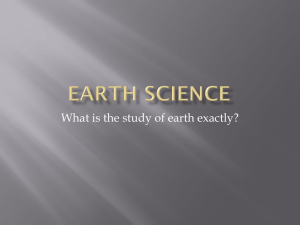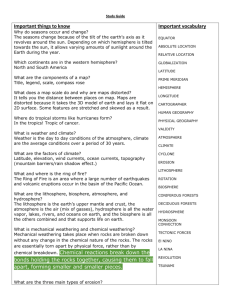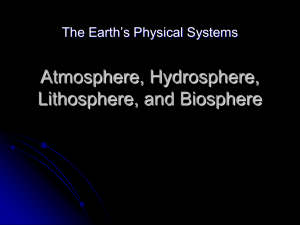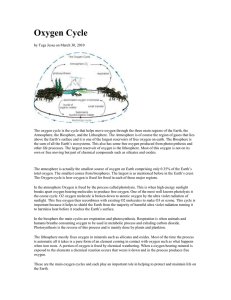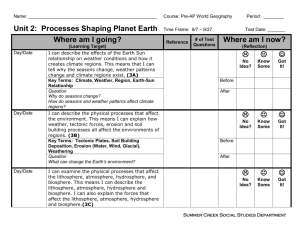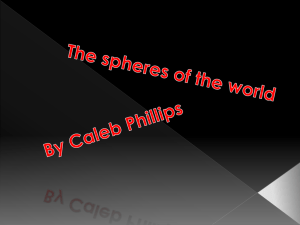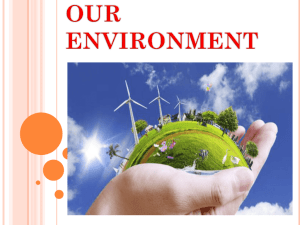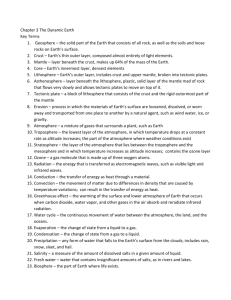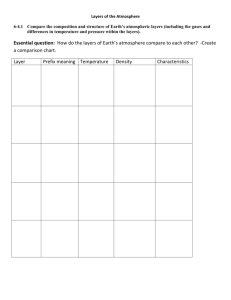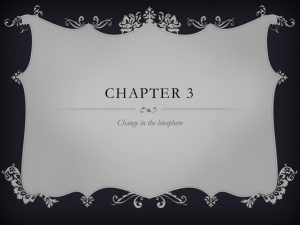Earth gr 7 study guide
advertisement
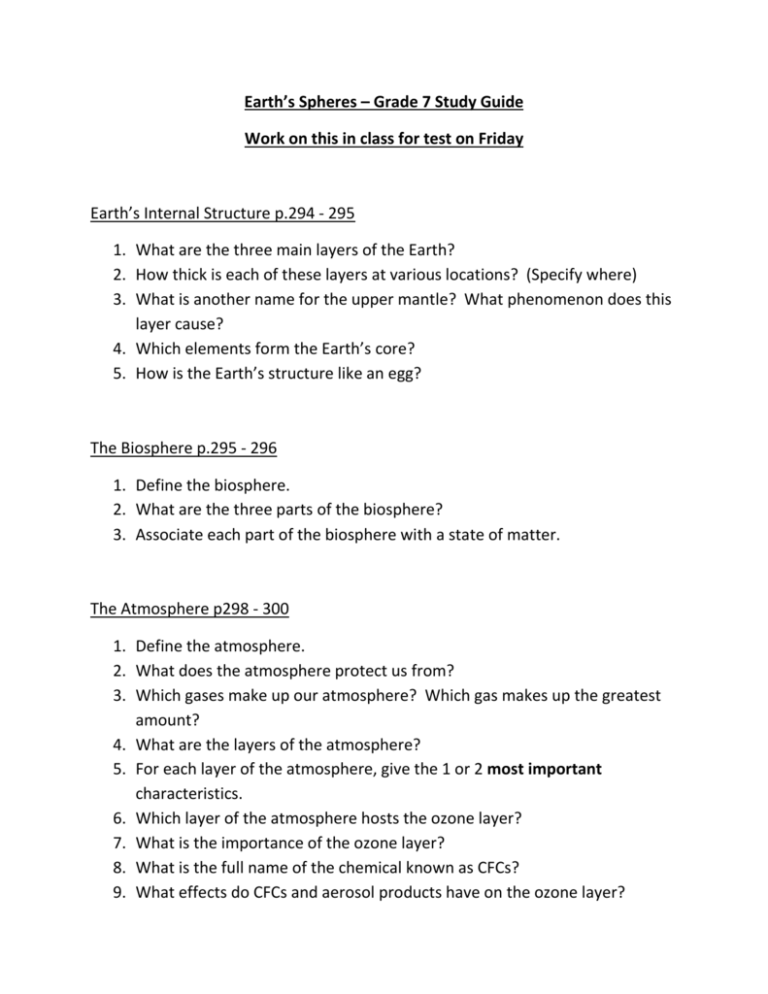
Earth’s Spheres – Grade 7 Study Guide Work on this in class for test on Friday Earth’s Internal Structure p.294 - 295 1. What are the three main layers of the Earth? 2. How thick is each of these layers at various locations? (Specify where) 3. What is another name for the upper mantle? What phenomenon does this layer cause? 4. Which elements form the Earth’s core? 5. How is the Earth’s structure like an egg? The Biosphere p.295 - 296 1. Define the biosphere. 2. What are the three parts of the biosphere? 3. Associate each part of the biosphere with a state of matter. The Atmosphere p298 - 300 1. Define the atmosphere. 2. What does the atmosphere protect us from? 3. Which gases make up our atmosphere? Which gas makes up the greatest amount? 4. What are the layers of the atmosphere? 5. For each layer of the atmosphere, give the 1 or 2 most important characteristics. 6. Which layer of the atmosphere hosts the ozone layer? 7. What is the importance of the ozone layer? 8. What is the full name of the chemical known as CFCs? 9. What effects do CFCs and aerosol products have on the ozone layer? The Hydrosphere p 302 – 305, 336 – 337, notes 1. 2. 3. 4. 5. 6. What is the hydrosphere? Name the two types of water on Earth. Where can most of the Earth’s fresh water be found? We always have the same amount of water on Earth. Why is this so? Water continuously travels between which three places? Briefly describe the water cycle’s four stages(One or two sentences per stage) 7. What is acid rain? What effects can it have? The Lithosphere p 306, 317 – 324 1. 2. 3. 4. What is the lithosphere? What layers of the Earth are included in the lithosphere? Why is the lithosphere essential for life? It is theorized that all the land on Earth was once one continent. What was that continent called? What was the name of the ocean that surrounded it? 5. Who came up with this theory? When? 6. What were the three things that were studied by this person, which led him to this theory? 7. What was the theory of the movement of the supercontinent into smaller ones called? 8. Why did not one accept this theory? 9. What invention in the 1960’s helped map the ocean floor? 10.What Canadian scientist made improvements on the theory about the movement of the continents? 11. What did the scientist name his new theory? 12. Name the three ways tectonic plates move in relation to each other. 13. What natural phenomena are the result of the movement of tectonic plates?

